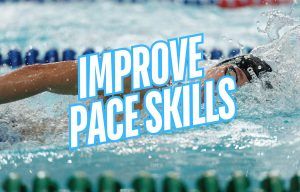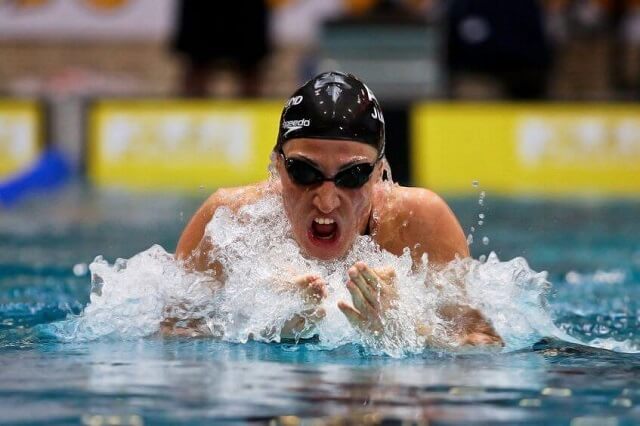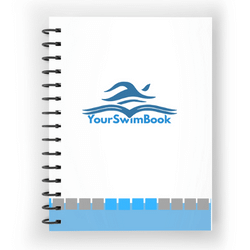
How to Improve Your Pacing Skills
Looking to up your pacing skills in the pool? Here are some actionable pacing tips and tools to help you master pace and your performance on race day.

Ready to take your swimming to the next level? Here is what you know before setting off to completely dominate your training and the competition.
You’ve decided that this is going to be the season where you take things to a whole new level in the pool.
With lofty goals affixed on high, an unshakable resolve to do whatever it takes, and all the support you could ever need around you, you charge into the season ready to smash your personal best times and turn some heads while doing it.
So you know that you are going to have to escalate the work you are doing in the pool in order to smash some best times.
But where do you start?
This is the point where a few classic mistakes are made:
See Also: How to Fix Your Bad Training Habits
The secret to getting into even better shape is to escalate volume before you increase intensity.
So let’s say currently you are swimming 9x per week, which is what we could consider a fairly advanced level, with a majority of those practices done with a significant amount of race pace, or close to race pace, yardage.
That’s a lot of high intensity training.
The temptation is to add another couple high intensity workouts—but what this typically ends up doing is cutting short recovery between practices leading to the increased likelihood of burn out.
Instead, add 1-2 low intensity sessions.
You could strap on some fins and do a couple 1k’s kick at a cruising speed. Throw in a bunch of technical work. Drills, sculling, super slow swimming with perfect pace and killer technique.
Why slow pace?
Why take it so easy as volume is increased?
Well, even though there is a tendency for coaches to drive their swimmers into the ground with endless reps at a high intensity, having a strong aerobic foundation is key for performance in competition and more importantly, in training.
With high intensity training there is a point where doing more simply robs the energy and recovery necessary for the next session, and when adding training time you want to avoid costing recovery for your next practice.
The low intensity swimming that centers around cruise kick, drill and scull work not only doesn’t cost recovery, but strengthens your aerobic system.
But, but—I’m a sprinter! I don’t need no stinking aerobic work!
Wrong.
A strong aerobic system improves recovery between those tough sessions and during those tough sessions.
Just how much of a role does aerobic work factor in your sprints?
According to this research, your aerobic system is responsible for 13% of the energy in a 10-second sprint, and 27% in a 20-second sprint.
Regardless if you possess a 20-point 50m freestyle like world short course holder Florent Manaudou you still need aerobic work to punish the sprints.
1. Sleep and diet are an absolute priority. If you aren’t doing your best to recover between your workouts recovery will suffer, performance will suffer, and progress will halt. Eating and sleeping aren’t just things you do in between bouts of aggressive training—they are the fuel and the recovery to your workouts. Eat to perform, sleep to perform.
2. Volume before intensity. Remember what we just talked about in regards to improving your aerobic system? Level up your swimming with low intensity work first.
3. Scale slowly. Yes, we want results and we want them now goshdarnit! Your body is capable of amazing feats of resiliency, but we don’t want to add sessions if it is costing you performance in your existing practice schedule.
4. Form above everything else. If form is deteriorating to the point of complete failure rest. Great technique is the easiest and most overlooked way to swim faster. More swimming shouldn’t be done at the expense of shoddy technique.
5. Before you do extra, maximize the opportunities you already have. Extra and bonus work is great, but only if you are already maxing out the training chances currently presented to you.
I can understand that the idea of doing more aerobic work might not seem “hard enough” or challenging to the point that it would drive improvement.
Low intensity aerobic work, when done with purpose can be a great recovery tool while also developing a broader foundation for the high intensity work you are already doing.
Try adding 1-2 chill workouts to your practice schedule over the next couple weeks and you will find yourself coming back stronger after the big sessions, while also fine tuning your technique in the water.
YourSwimBook is a log book and goal setting guide designed specifically for competitive swimmers. It includes a ten month log book,
Learn 8 more reasons why this tool kicks butt now.
Join the YourSwimBook weekly newsletter and get motivational tips and more straight to your inbox. Sign up for free here.

Olivier Poirier-Leroy Olivier Poirier-Leroy is the founder of YourSwimLog.com. He is an author, former national level swimmer, two-time Olympic Trials qualifier, and swim coach.
✅ Free shipping on Orders over $49
✅ Price Match Guarantee
✅ Best selection of gear for training and competition
✅ Fast and Easy Returns

“This is the best book I have ever seen concerning mental training.” — Ray Benecki, Head Coach, The FISH Swim Team


Looking to up your pacing skills in the pool? Here are some actionable pacing tips and tools to help you master pace and your performance on race day.

Looking for tips on how to use a drag chute for improved swim performances? Read on for some proven tips, sets, and pointers for training with a chute.

Ready to take your swimming to the next level? Here are seven ways that a drag chute can help you become a better and faster swimmer.

Wondering if a swim bench can help improve your swimming? Here are six benefits of swim benches for better technique, more power, and faster swimming.

Not breathing into the walls is one of the fundamental skills developing swimmers are taught. Here is how powerful a no-breath approach is for turn and swim speed. Strong training habits are something swimmers hear a lot about from their earliest days of their competitive swimming careers. The greatest hits

Drills with a swim snorkel are one of the best ways to maximize engagement and skill development. Here are five swim snorkel drills to try for faster swimming.
SITE
SHOP
GUIDES

LANE 6 PUBLISHING LLC © 2012-2025
Join 33,000+ swimmers and swim coaches learning what it takes to swim faster.
Technique tips, training research, mental training skills, and lessons and advice from the best swimmers and coaches on the planet.
No Spam, Ever. Unsubscribe anytime.
